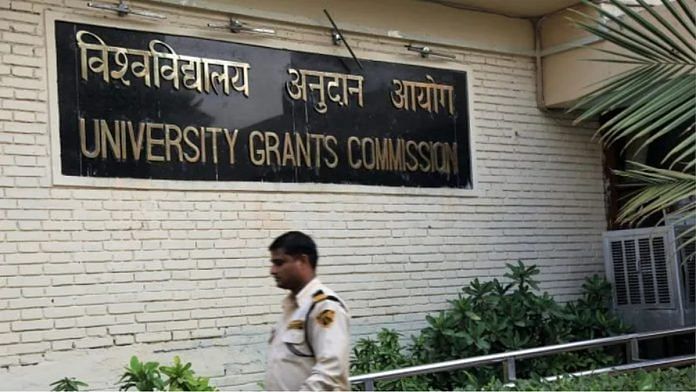New Delhi: University Grants Commission (UGC) chairman M. Jagadesh Kumar has approved regulations for Indian and foreign higher education institutions to offer joint degrees, dual degrees, and twinning programmes. The draft of the regulations was first released in 2021, and has now been finalised after gathering public feedback.
According to the draft UGC regulations, higher education institutions in India can collaborate with foreign counterparts for credit recognition and transfer, “twinning” arrangements, as well as offer degrees.
For joint degrees, both the partner institutions will have to sign a memorandum of understanding (MoU), the regulations state. Students from India will be required to complete more than 30 per cent of their course credit at a foreign institute. The degree, on completion of the course, will be awarded by the Indian institution, along with a certificate of credit recognition.
For dual degrees too, students will have to complete 30 per cent of course credit at a foreign institute, but the degree awarded by both Indian and foreign institutes will indicate the credits earned at the respective institutions.
The UGC has decided that under twinning arrangements, credits earned at a foreign educational institution will be counted towards the degree/diploma awarded by the Indian higher education institution. Each institution shall issue a transcript for their respective courses, with a remark indicating that the student has taken certain modules at the partner institution.
“Twinning arrangement shall be a collaborative arrangement whereby students enrolled with an Indian higher education institution may undertake their programme of study partly in India and partly in the foreign higher education institution,” the regulations state.
The degree or diploma offered under the twinning arrangement shall be awarded by the Indian higher education institution only. This arrangement is similar to what some of the private universities are currently offering, allowing students to complete some part of their studies in a foreign institution which they have a tie-up with.
In order to maintain the academic quality, the UGC has fixed eligibility for institutions that can be a part of the scheme.
Also Read: IISc, IIT programmes under India’s ‘eminence scheme’ feature in top 100 world rankings by subject
Strict norms
Indian institutions that can be a part of the collaboration will be those that either have a National Assessment and Accreditation Council (NAAC) ranking of 3.01 or above, are in the top 100 in the National Institutional Ranking Framework (NIRF), or are in the top 1000 of the Times or QS rankings. Following the regulations, institutions that fall under this category will not be required to obtain separate permission from the UGC for the collaboration.
The international institutions with whom Indian institutions can collaborate need to be in the top 1000 in the QS or Times Ranking, the commission has said.
UGC chairman Kumar also informed that the process for admission, rules for attendance and examination will be decided by the two collaborating institutions.
(Edited by Manoj Ramachandran)
Also Read: After central universities, UGC wants state-run & deemed-to-be institutions to come under CUET






